Please note, links to all the Freedom Essays are included at the end of this essay. Open any essay to read, print, download, share or listen to (as an audio).
Freedom Essay 25
The truthful biology: the real story of the development of life, including humans
In Video/Freedom Essay 14 it was explained that like almost all humans, scientists have lived in fear of the human condition, and so have been unable to confront it, and if you can’t confront a subject you’re in no position to think truthfully and effectively about it.
Furthermore, it was explained in F. Essay 23 that this fear of the human condition has meant that scientists have had to avoid the overarching, truthful whole view of the integrative meaning of existence, adopting instead a reduced view that focused only on the details of the mechanisms of the workings of our world—it has been what’s called ‘reductionist’ and ‘mechanistic’. This denial-based approach, while necessary until we could explain the human condition, has meant that science is stalled, completely unable to make any sense of the greater meaning of life.
It follows that now that the human condition has been explained (see THE Interview and Video/F. Essay 3), as has the truth of Integrative Meaning (F. Essay 23), a whole-view-confronting, denial-free-thinking science that acknowledges the integrative meaning of life is now possible. It is that new, honest biological description of the development of life on Earth, including of human life, that is presented in this essay.
What follows is a condensation by Jeremy Griffith of chapters 4:2 – 4:6 of his book FREEDOM.
- - - - - - - - - - - - - - - - - -
F. Essay 23 explained that the world’s greatest physicists, Stephen Hawking and Albert Einstein, have said, respectively, that ‘The overwhelming impression is of order…[in] the universe’, and that ‘behind everything is an order’. It was pointed out that this ‘order’ is apparent everywhere; that over the eons a chaotic universe organised itself into stars, planets and galaxies—and that here on Earth, atoms became ordered or integrated to form molecules → which in turn integrated to form compounds → virus-like organisms → single-celled organisms → multicellular organisms → then societies of multicellular organisms → and beyond that the integration of species members into ‘Specie Individuals’.
So the direction or theme or purpose or meaning of existence is the ordering or integration or complexification of matter, a process that is driven by the physical law of Negative Entropy where, in an open system, in which energy can come into the system from outside it—in Earth’s case, from the sun, and, in the case of the universe, from the original ‘big bang’ explosion that created it—matter integrates; it develops order. ‘Holism’, which the dictionary defines as ‘the tendency in nature to form wholes’, and ‘teleology’, which is defined as ‘the belief that purpose and design are a part of nature’, are both terms that recognise this integrative ‘tendency’. (see par. 318 of FREEDOM)
In 1987, the physicist Paul Davies acknowledged the integrative process when he wrote that ‘We seem to be on the verge of discovering not only wholly new laws of nature, but ways of thinking about nature that depart radically from traditional science…Way back in the primeval phase of the universe, gravity triggered a cascade of self-organizing processes—organization begets organization—that led, step by step, to the conscious individuals who now contemplate the history of the cosmos and wonder what it all means…There exists alongside the entropy arrow another arrow of time [the Negative Entropy arrow], equally fundamental and no less subtle in nature…I refer to the fact that the universe is progressing—through the steady growth of structure, organization and complexity—to ever more developed and elaborate states of matter and energy. This unidirectional advance we might call the optimistic arrow, as opposed to the pessimistic arrow of the second law. There has been a tendency for scientists to simply deny the existence of the optimistic arrow. One wonders why.’ (see par. 329 of FREEDOM)
As was explained in F. Essay 23, the reason ‘why’ ‘scientists’ ‘deny’ ‘the optimistic arrow’ of Integrative Meaning is because it confronts humans with the issue of our divisive, selfish and competitive, ‘good and evil’-conflicted, apparently non-integrative human condition. The fact is that for a larger whole to form and hold together the parts of that whole must consider the welfare of the whole above their own welfare—put simply, selfishness is divisive or disintegrative while selflessness is integrative. So, consider-others-above-yourself, altruistic, unconditional selflessness is the underlying theme of existence; it’s the glue that holds the world together and what we really mean by the term ‘love’. BUT, again, acknowledging that the meaning of life is to be integrative, cooperative, selfless and loving left humans feeling unbearably condemned as bad, evil or unworthy for our divisive competitive, selfish and aggressive, seemingly-unloving behaviour.
In fact, despite Integrative Meaning being an extremely obvious truth—because there are hierarchies of ordered matter everywhere we look, such as in trees, animals, our body, rocks, clouds, etc, etc—it has been such a terrifyingly condemning truth that we deified the process of Integrative Meaning as ‘God’, thus making it something separate and superior to us, not connected to us in an earthly, practical way. As the philosopher Nikolai Berdyaev put it, ‘He cannot [man struggles to] break through to paradise that lies beyond the painful distinction between good and evil, and the suffering connected therewith. Man’s fear of God is his fear of himself, of the yawning abyss of non-being [alienation] in his own nature (see par. 330 of FREEDOM)’. These further words from Hawking acknowledge that the concept of ‘God’ is actually a personification of the Negative-Entropy-driven integrative process: ‘I would use the term God as the embodiment of the laws of physics’ and ‘We could call order by the name of God.’

Integrative Meaning is such an obvious truth that if you’re not having to live in fearful
denial of it, as denial-free thinkers like Jeremy Griffith haven’t had to do, they can
recognise and acknowledge it, as Jeremy did when, in 1977 (which was before he
knew of others’ acknowledgment of it), he drew this drawing that summarised his
recognition of this underlying integrative process he could see was operating in nature.
Of course, now that understanding of the human condition has been found and our divisive behaviour is explained, it becomes psychologically safe to demystify God as Integrative Meaning, and, by so doing, finally reconcile religion and science. From the religious perspective, this is the time the prophet Isaiah was looking forward to when reconciling understanding of the human condition would be found and we could ‘revere’ instead of fear the truth of Integrative Meaning/God: ‘Why, O Lord, do you make us wander from your ways and harden our hearts so we do not revere you?…Do not be angry beyond measure…do not remember our sins for ever…all that we treasured [before the human condition emerged] lies in ruins. After all this, O Lord, will you hold yourself back? Will you keep silent and punish us beyond measure?’ And from the scientific side of the fence, when the scientist-philosopher Pierre Teilhard de Chardin wrote in 1938 that ‘I can see a direction and a line of progress for life, a line and a direction which are in fact so well marked that I am convinced their reality will be universally admitted by the science of tomorrow’, he too was recognising how obvious, ‘so well marked’, the truth of Integrative Meaning is, and how it wouldn’t be able to be ‘universally admitted’ until the human-condition-reconciled ‘science of tomorrow’ emerged, which it now has. (see par. 336 of FREEDOM)
Most importantly, this recognition of the underlying truth about the nature of existence of Integrative Meaning is crucial for a true understanding of our world and place in it—which de Chardin also understood when he wrote that ‘biology cannot develop and fit coherently into the universe of science unless we decide to recognise in life the expression of one of the most significant and fundamental movements in the world around us…the vast universal phenomenon…of complexification of matter. This is something that must be clearly appreciated if we are to get away to a good start in our study of man…This [complexification of matter] is a very simple concept, but the more we think about it, the more, in fact, are we led to see the world of life as a vast sheaf of particles rushing headlong…down the slope of an indefinite corpusculisation…First, there are the regressive currents: entropy, dissipation of energy…But there are progressive, or constructive, currents too…a growing complexity…the passage from an unordered to an ordered heterogeneity…[where, at a certain point in this progression, vitalisation occurs, and] one portion of the cosmic stuff not only does not disintegrate but even begins—by producing a sort of bloom upon itself—to vitalise [as will shortly be explained, this is when the replicating DNA molecule appeared and ‘made a business’ of actively resisting disintegration] …life can no longer be regarded as a superficial accident in the universe: we must look on it as…ready to seep through the narrowest fissure at any point whatsoever in the cosmos—and, once it has appeared, obliged to use every opportunity and every means to reach the furthest extremity of everything it can attain: the ultimate, externally, of complexity, internally of consciousness.’ (see par. 337 of FREEDOM)
Plato was another who recognised this inherent limitation of the Integrative-Meaning-denying mechanistic approach when, in explaining humans’ fear of the ‘sun’ outside his metaphorical ‘cave’ we are hiding in (see Video/F. Essay 11), he said that the ‘sun’ represents the ‘universal, self-sufficient first principle’, the ‘absolute form of Good’ (which we can now understand as Integrative Meaning), and that acknowledgment of ‘the Good…gives the objects of knowledge their truth and the mind the power of knowing…[just as] The sun…makes the things we see visible…The Good therefore may be said to be the source not only of the intelligibility of the objects of knowledge, but also of their existence and reality.’ (see par. 338 of FREEDOM)
Yes, this loss of ‘the power of knowing’ that has resulted from mechanistic science’s denial of Integrative Meaning has been very serious indeed. The polymath Arthur Koestler also bemoaned the crippled, stalled, atrophied state of all of science, but of biology and psychology in particular, when he said that blind, reductionist, mechanistic science’s denial of Integrative Meaning has ‘taken the life out of biology as well as psychology’, writing that ‘although the facts [of the integration of matter] were there for everyone to see, orthodox evolutionists were reluctant to accept their theoretical implications. The idea that living organisms, in contrast to machines, were primarily active, and not merely reactive; that instead of passively adapting to their environment they were…creating…new patterns of structure…such ideas were profoundly distasteful to [Social] Darwinians, behaviourists and reductionists in general…Evolution has been compared to a journey from an unknown origin towards an unknown destination, a sailing along a vast ocean; but we can at least chart the route…and there is no denying that there is a wind which makes the sails move…the purposiveness of all vital processes…Causality and finality are complementary principles in the sciences of life; if you take out finality and purpose you have taken the life out of biology as well as psychology.’ (see par. 338 of FREEDOM)
Towards the end of The Origin of Species, Charles Darwin anticipated that ‘In the distant future I see open fields for far more important researches. Psychology will be based on a new foundation, that of the necessary acquirement of each mental power and capacity by gradation. Light will be thrown on the origin of man and his history.’ Given Koestler’s comment that ‘if you take out finality and [the ‘integrative tendency’ or] purpose you have taken the life out of biology as well as psychology’, what was required to bring about Darwin’s ‘new’ en-‘light’-ening ‘foundation’ for ‘far more important research’ in ‘biology as well as psychology’ was not only acknowledgment of the involvement of our conscious ‘mental power’ but also of ‘integrative’ ‘purpose’.
(Much more is explained in Video/F. Essay 14 & F. Essay 40 about how science is not only crippled, but, with its dishonest theories for human behaviour, is actively leading humanity to darkness.)
So, what is the ‘far more important research’ that results from thinking from the ‘new’ en-‘light’-ening ‘foundation’ of accepting the truth of ‘integrative’ ‘purpose’?
The denial-free history of the development of matter on Earth
In commencing this denial-free analysis of the development of matter from a perspective that takes into account the truth of Integrative Meaning, we first need to replace the word ‘evolution’ with the word ‘development’, for while evolution implies that organisms do change or evolve it avoids acknowledging that there is a direction and purpose to that change, which is to develop the order of matter.
As the study of physics has shown, our world is made up of three fundamental ingredients—time, space, and energy—with, as Einstein revealed in his famous formula E = mc2, energy taking the form of matter, which comprises the 94 or so naturally occurring elements that, when subjected to the laws of physics, particularly the law of Negative Entropy, became ordered or integrated; they formed more stable or enduring (in time) and ever larger (in space) arrangements.
This development of order of matter involved the initial mixture of the Earth’s elements and their gradual formation into stable arrangements called molecules—for example, the water molecule is a stable arrangement of two single positively charged hydrogen atoms with one double negatively charged oxygen atom. In time, through the mixing of different elements, each with its own particular properties, many stable arrangements were found or developed, leading to even greater order and complexity of arrangements in the form of very complex macromolecules.
The problem, however, was that the more complex these macromolecules became, the more unstable they tended to be. Highly complex macromolecules would only occasionally form and, when they did, they didn’t tend to hold together for long before breaking down into their separate parts. Eventually an impasse was reached where the degree of instability imposed a limit on how complex macromolecules could become. When this ceiling was reached it appeared Negative Entropy—or ‘God’ if we were to personify the process—could not develop any more order of matter on Earth. And yet matter did continue to ‘develop’ beyond this apparent impasse, with the emergence out of the primordial soup of DNA, or deoxyribonucleic acid, a complex macromolecule with an unusual property. What was unusual about DNA was that it could replicate. It could split, allowing the two halves to draw material from the environment to build two complete DNA molecules. The significance of this replication was that it meant DNA could defy breakdown. It could turn a relatively brief lifetime for a complex macromolecule into a relatively indefinite one. DNA’s ability to replicate meant that even though some of the replicates disintegrated into smaller parts, others would survive and go on to replicate further. With slight variations called mutations occurring from the effects of solar radiation, replicates were ‘found’ that were even more stable/enduring (in time) and more ordered/complex/larger (in space). The process of natural selection of more stable and larger arrangements of matter—and the origin of an indefinite lifetime, or ‘life’ as we call it—appeared.
In this process, each replicating arrangement of matter or reproducing individual was, in effect, being tested both for its ability to survive and reproduce in its lifetime and, over generations of offspring, for its ability to adapt to changes in the environment in which it lived, with those that managed to survive and adapt inevitably, whenever possible, finding/refining/achieving/growing/developing even greater order of matter. The effect of this process over time was that more and greater order of matter was integrated. It was the ability to survive and adapt that supplied the opportunity for more and greater order of matter to develop. Thus, using the tool of replicating DNA, Negative Entropy was able to integrate matter into larger wholes; it was able to develop ever more and ever greater order of matter on Earth.
DNA is actually a very complex crystal. Crystal molecules abound—common salt, sodium chloride, for instance, is one—and in a suitable nutrient environment they all have the capacity to reproduce; to grow their structure from their structure. However, being much simpler than DNA—having fewer elements within their molecular structure—they have little or no potential for adaptation and, it follows, for the development of greater order.
Indeed, variability is so critical to this DNA process of developing greater order of matter that ‘sexual reproduction’ of DNA molecules developed, where the split halves from two compatible DNA molecules were made, through natural selection, to come together (be ‘attracted to and mate with each other as males and females’) to form a new, slightly different DNA-based sexually reproducing individual. This greatly increased the variety of a particular DNA type or ‘species’ and, by so doing, greatly increased its chances of finding/achieving/growing/developing larger and more stable arrangements of matter. Sexual reproduction, therefore, soon replaced non-sexual or ‘asexual’ reproduction as the most successful or effective form of DNA reproduction in this business of finding or developing greater order of matter.
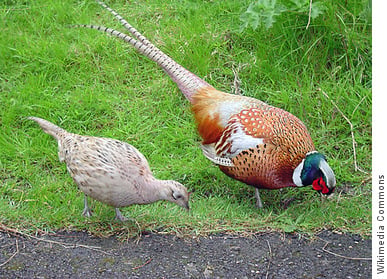
Sexual reproduction allows maximum variety and thus stability,
making it the most effective form of reproduction
It can be seen then that Negative Entropy’s development of order of matter really comes down to being a product of possibilities. The differing properties of matter mean some arrangements of matter break down towards heat energy, while others stay stable and still others become part of larger and more enduring associations of matter. In time, all the possible associations of matter will be automatically or, as Darwin called it, ‘naturally’ investigated until the largest, most stable association is left or found or, as Darwin described it, ‘selected’. What happened with DNA was that it not only turned a relatively short lifetime for extremely complex molecules into a relatively indefinite one, it also made a business, as it were, of this ‘negentropy’ direction—both of resisting breakdown and of developing order. The replicating DNA molecule gave rise to a process that actively resisted breakdown and actively developed ever more and greater order of matter. This is the ‘active’, ‘creating’, ‘purposiveness’, ‘vitalisation’ of life about which Koestler and de Chardin wrote.
The DNA unit of inheritance is called a gene, with the study of the process of change that genes undergo termed ‘genetics’. As a tool for Negative Entropy’s development or refinement of the order of matter on Earth, the genetic process was very powerful—it was able to develop the great diversity of matter that we term ‘the variety of life’. From DNA, virus-like organisms developed, then from virus-like organisms developed single-celled organisms (such as bacteria), and from single-celled organisms developed multicellular organisms (such as plants and animals). The next level of order to be developed or integrated by Negative Entropy was societies or colonies or ordered arrangements of multicellular organisms. It was at this point, however, that Negative Entropy (or God) encountered another major impasse.
While genetics has proved to be a marvellous tool for integrating matter it has one very significant limitation, which arises from the fact that each sexually reproducing individual organism has to struggle, compete and fight selfishly for the available resources of food, shelter, territory and the mating opportunities it needs if it is to successfully reproduce its genes. What this means is that integration, and the unconditionally selfless cooperation it depends on, cannot normally develop between one sexually reproducing individual and another. Indeed, the competition between sexually reproducing individuals is the basis of the natural selection process that gave rise to the great variety of life on Earth. The word ‘selection’ in ‘natural selection’ implies competition—a comparison between sexually reproducing individuals for their ability to survive, adapt and develop greater order of matter. So integration beyond the level of the sexually reproducing individual—that is, the coming together or integration of the sexually reproducing individual members of a species to form the next larger and more stable whole of the Specie Individual—could not, normally, develop. This was the second major impasse that Negative Entropy (or God) encountered: the development of order of matter on Earth had seemingly come to a stop at the level of the sexually reproducing individual.
To elaborate, each sexually reproducing individual normally has to ensure the reproduction of its own genes, which means sexually reproducing individuals cannot normally develop the ability to behave unconditionally selflessly towards other sexually reproducing individuals—which, as has been explained, is what full cooperation and thus complete integration requires. Certainly sexually reproducing individuals can develop conditionally selfless behaviour towards other sexually reproducing individuals. Situations of reciprocity can develop where one sexually reproducing individual selflessly helps another on the proviso that they are selflessly helped in return, which, in effect, means both parties are still selfishly benefiting. So sexually reproducing individuals can develop reciprocity because it is, in essence, still selfish behaviour: it doesn’t give away an advantage to other sexually reproducing individuals and, therefore, doesn’t compromise the reproductive chances of the sexually reproducing individual practising the behaviour. Unconditionally selfless, altruistic traits, on the other hand, do give away an advantage to other sexually reproducing individuals—that being the meaning of unconditional selflessness, that you are giving without receiving—and, therefore, unconditionally selfless, altruistic, self-sacrificing traits do compromise the reproductive chances of the sexually reproducing individual practising such behaviour and, therefore, cannot normally develop.
So cooperation between sexually reproducing individuals cannot normally be developed beyond a situation where there is reciprocal/conditional selflessness, and, since conditionally selfless behaviour is still basically selfish behaviour, full cooperation and thus complete integration cannot normally be developed between sexually reproducing individuals to form the Specie Individual. This inability to develop unconditionally selfless, altruistic behaviour leaves sexually reproducing individuals competing relentlessly with each other for available resources of food, shelter, territory and a mate. So much so, in fact, that what we see happening between sexually reproducing individuals as they try to develop more integration under this limitation of not being able to develop unconditionally selfless behaviour is that the competition between them becomes so intense that the only way they can contain it at all is by establishing a dominance hierarchy, where each individual accepts its position in a hierarchy that is ordered according to the competitive strengths of the various individuals involved. The benefit of a dominance hierarchy, or a so-called ‘peck order’, is that once established the only time competition breaks out is when an opportunity arises to move up the hierarchy; for the rest of the time there is relative peace. The emergence of a dominance hierarchy is a sign a species has developed as much integration as it possibly can.
It should be pointed out that in situations where competition between individuals breaks out—when, for instance, male elephants or whales or kangaroos or birds or solitary insects, etc, etc, chase a female in estrous—it’s not simply because the female wants to discover which is the strongest male with which to mate to ensure her offspring is the strongest, most competitively successful individual it can be, as is currently taught, but because the Negative Entropy integrative tendency has driven the males and the females to that extreme state of competition. Such extreme competition is, in truth, a result of trying to develop greater order of matter. More will be said about this shortly, but the real story of life on Earth is not about selfish competition but integration.
So although dominance hierarchy hides it from view for most of the time, the reality is that extreme competitiveness characterises the behaviour of the more cooperative and thus integrated, or what has evasively been called ‘social’, species. In my youth I remember feeding hens in our hen house and seeing a hen twist her leg and become temporarily crippled, at which point all the other hens immediately attacked her. In that instant it was suddenly apparent to me just how closely and intensely each hen was watching all the other hens for an opportunity to literally move up the peck order. The hen house was not at all the gregarious, peaceful community I thought it was; rather, it was a place of absolutely fierce competition! Darwin recognised this truth about the real struggle in the lives of most animals when he wrote that ‘It is difficult to believe in the dreadful but quiet war of organic beings, going on [in] the peaceful woods and smiling fields’ (see par. 354 of FREEDOM).
This situation where sexually reproducing individuals relentlessly compete for available resources is the situation, the condition, that almost all animals have to endure—it is the great, agonising ‘animal condition’. When humans become free of our numbed, alienated human condition we are going to be shocked by the agony of the animal condition; we are going to feel the distress all non-human animal species live under, where each sexually reproducing individual, through its Negative Entropy-driven commitment to achieve greater integration, is having to relentlessly and fiercely compete to reproduce its genes. Thank goodness animals can’t reason and thus look forward in time. As the poet Robert Burns wrote about non-rational animals, ‘Still thou art blest, compared with me! The present only touches thee: But och! I backward cast my eye, on prospects drear!’ And forward, tho I cannot see, I guess and fear!’ (see par. 355)
What now needs to be explained is, firstly, that while sexually reproducing individuals cannot normally be integrated, the sexually reproducing individual itself could be elaborated, enlarged, expanded—developed further to become bigger—which, as will be explained next, is how single-celled organisms developed into multicellular organisms, and how multicellular colonial ants and bees integrated into their fully cooperative and thus completely integrated colonies. Significantly, in these ‘elaborated sexually reproducing individuals’, the cells of the multicellular body, or the individual ants and bees in their fully integrated colonies, are no longer sexually reproducing individuals themselves, but part of a larger sexually reproducing individual, which is the body, or, in the case of ants and bees, the colony.
Secondly, it has to be explained why I have been saying it is ‘normally’ not possible for sexually reproducing individuals to become fully integrated to form the Specie Individual. There was, in fact, one species who managed to achieve the development of the next larger whole in the integration of matter on Earth of the integration of sexually reproducing individuals to form the Specie Individual: our ape ancestors. As was explained in F. Essay 21, this amazing step in the development of matter was achieved through maternalism—the nurturing of our offspring—which has been another of those unbearable truths that humans couldn’t face until we could explain our divisive, unloving human condition.
To summarise what has been explained so far: in the development of order of matter on Earth, all non-human animal species are stuck in the ‘animal condition’, with each sexually reproducing individual member of the species forever having to compete to ensure its genes reproduce and carry on. That is the essential fact or rule of the gene-based natural selection process—genes are unavoidably selfish; they have to ensure they reproduce if they are to carry on. It is important to reiterate, however, that even though this selfishness—and the extreme competition between the sexually reproducing individuals it gives rise to—is characteristic of virtually all of nature, such selfishness is only occurring because of the limitation of the genetic process of normally being unable to develop unconditional selflessness between sexually reproducing individuals. In his 1850 poem In Memoriam, Lord Alfred Tennyson famously wrote: ‘Who trusted God was love indeed / And love Creation’s final law / Tho’ Nature, red in tooth and claw / With ravine [in violent contradiction], shriek’d against his creed.’ While Integrative Meaning or ‘God’ and its theme of unconditional selflessness or ‘love’ is the ‘creed’ or ‘final law’ of ‘creation’ that the competitive, selfish and aggressive, ‘red in tooth and claw’ characteristic of so much of ‘Nature’ seems to be in violent contradiction ‘against’, we can now understand that this selfish characteristic doesn’t mean that the overall biological reality of existence—life’s meaning and theme—is to be selfish, as the dishonest theories of Social Darwinism, Sociobiology, Evolutionary Psychology and Multilevel Selection would have us believe. (See Video/F. Essay 14 & F. Essay 40 for analysis of these dishonest theories.) As was explained in F. Essay 21, in the case of humans, we don’t have selfish instincts like other species, rather we have unconditionally selfless instincts. And the selfishness that is characteristic of so much of nature is only occurring because of the limitation of the gene-based refinement process—its inability, in most situations, to develop unconditional selflessness. The genetic process would develop unconditionally selfless, fully cooperative behaviour between all sexually reproducing individuals if it could—because such selflessness is what is required to maintain a fully integrated whole—but, because of its particular limitation, it normally can’t. Integrative selflessness, not divisive selfishness, is the real nature or characteristic of existence, the theme of life.

Detail from portrait of Charles Darwin by John Collier (1883). Darwin was right when he
originally termed his concept ‘natural selection’ rather than the human-condition-avoiding,
mechanistic term ‘survival of the fittest’ that he was later persuaded to use.
Incidentally, in describing his concept of natural selection, Darwin originally left it undecided as to whether individuals who managed to reproduce are ‘fitter’ or better than those who don’t, but was later persuaded by human-condition-avoiding, mechanistic biologists to describe natural selection as a competitive, ‘survival of the fittest’ process. Well, we can now see why it was right for Darwin to leave it undecided as to whether individuals who manage to reproduce are better or ‘fitter’ than those who don’t. As has now been explained, it can be completely consistent with the integrative meaning of existence for an individual to give their life for the purpose of maintaining the larger whole of their society and thus not reproduce. Unconditionally selfless, self-sacrifice for the good of the whole, is the very theme of existence. It is only because of the limitation of the gene-based natural selection process that unconditionally selfless behaviour normally cannot be developed between sexually reproducing individuals. Selfless cooperation, not selfish, competitive, ‘survival of the fittest’ behaviour, is the real characteristic of existence, the theme of life.
Elaborating the sexually reproducing individual
As stated, while sexually reproducing individuals cannot normally be integrated, the sexually reproducing individual itself could be elaborated, made bigger, which, as will now be explained, is how single-celled organisms developed into multicellular organisms, and how multicellular colonial ants and bees integrated into their fully cooperative colonies. Struggling to find a way to develop greater order of matter by integrating sexually reproducing individuals, it was as if Negative Entropy (or God) decided, ‘Well, what I’ll do is develop greater order of matter within each genetically reproducing individual, making it bigger.’
As was also mentioned, in these ‘elaborated sexually reproducing individuals’, the cells of the multicellular body, or the individual ants and bees in their fully integrated colonies, are no longer sexually reproducing individuals themselves, but part of a larger sexually reproducing individual, which is the body, or, in the case of ants and bees, the colony.
The biological mechanism for elaborating the sexually reproducing individual involved the body’s cells, or the colony’s multicellular bees/ants, delegating the task of sexual reproduction to a distinct part of the whole that specialises in reproduction. In the case of the integration of single-celled organisms, the green alga known as Volvox provides an example of an organism in transition from the single-celled to the multicellular state, as this quote describes: ‘Volvox is…a small, green sphere…composed of thousands of flagellates embedded in the surface of a jelly ball…Volvox is a colony of unicellular animals rather than a many-celled animal, because even the simplest many-celled animals have considerably more differentiation between cells than appears among the cells of Volvox. The colony swims about, rolling over and over from the action of the flagella; but, remarkably enough, the same end of the sphere is always directed forward…Its behaviour can be explained only by supposing that the activities of the numerous flagellates are subordinated to the activity of the colony as a whole. If the flagella of each member of the colony were to beat without reference to the other members, the sphere would never get anywhere. In such subordination of the individual cells of a colony to the good of the colony as a whole we see the beginnings of individuality as it exists in the higher animals, where each animal behaves as a single individual, although composed of millions of cells…The co-ordination of numerous components into an individual is usually followed by the specialisation of different individuals for different duties. Only the slightest degree of specialisation is seen in the Volvox colony; the flagellates of the back part of the colony are capable of reproduction, while the front members never reproduce but have larger eyespots and serve primarily in directing the course of the colony.’ (see par. 361 of FREEDOM)
The marine invertebrates known as siphonophores, which include species such as the Portuguese man-of-war (otherwise known as the Bluebottle), live in colonies composed of ‘zooids’, individual animals that are not fully independent—indeed, their reliance upon and integration with each other is so strong the colony attains the character of one large organism. In fact, most of the zooids are so specialised they lack the ability to survive on their own. Thus siphonophorae, like Volvox, exist at the boundary between colonial and complex multicellular organisms.
We can imagine the path to the creation of Volvox and siphonophores began with cloning, which is the asexual reproduction of identical offspring where competition between the clones is pointless and unnecessary since each individual is genetically identical and, therefore, the division of labour and cooperation can develop and exist between individuals. One concern with cloning, however, is loss of variability—for example, if one colony kept reproducing asexually it could become so big it monopolised the available resources of food, space and territory, leading to the detriment of other colonies and a subsequent lack of variability in the species. We can imagine that eventually a limited, functional size would be arrived at through natural selection, which presumably is the size at which Volvox and siphonophores operate. And obviously to maintain variability, it would also be beneficial for sexual reproduction to occur from time to time, as it does amongst Volvox and siphonophores.
In the case of bees, the queen bee feeds all of her offspring that she intends to be workers a ‘royal jelly’ that causes sterility (ants also employ a similar chemical retardant). To ensure the reproduction of their genes these sterile offspring then have to support the queen because she carries their genes. (It should be mentioned that saying the queen ‘intends’ and the offspring ‘have to’ is obviously personifying the genetic process. The queen and the offspring are obviously not conscious thinking organisms, deciding they ‘intend’ and ‘have to’ do something or other as humans do; however, this form of anthropomorphism is simply a useful way of describing what, in effect, occurs. For example, the way genetics actually causes offspring to ‘have to’ support the queen is that, out of the many different mutational varieties of offspring that appear over time, only those that happen to have a genetic make-up that inclines them to support the queen will tend to reproduce, naturally selecting that particular behaviour for all subsequent generations and eventually the whole species.)
Elaborating the sexually reproducing individual allows the members of the elaborated individual to develop the ability to at least behave unconditionally selflessly, which, as has been explained, is fundamental if the fully cooperative integration of members into a new whole is to develop. The reason our body works so well is because each part has sublimated its needs to the greater good of the whole body; each part behaves unconditionally selflessly. Just as our skin cells are in constant turnover, with new cells replacing the old ones that have sacrificed themselves to protect our body, the leaves that fall in autumn do so to ensure their tree survives through winter. Bees and ants readily sacrifice themselves for their colony; for example, when a bee stings to protect its hive, its innards are attached to the sting that is left in its victim, so when it stings, it dies. The skin, leaves and bees/ants have behaved unconditionally selflessly; they have, in effect, considered the welfare of the greater good above their own welfare.
Of significance, however, is the emphasis here on our body’s skin, the tree’s leaves and the bees/ants only behaving unconditionally selflessly, because the selflessness apparent in these examples is not actually true unconditional selflessness, it is not true altruism. This is because the self-sacrificing skin, leaves and bees/ants are all indirectly selfishly ensuring their own genetic existence will be maintained by supporting the body, tree, or bee/ant colony that carries the genes for their existence and so reproduces them when it reproduces itself as a whole. Genetically, they are selflessly fostering the body/tree/colony to selfishly ensure their own genetic reproduction. Their apparently unconditionally selfless behaviour is not actually unconditional and thus altruistic, but rather a subtle form of selfishness. As explained earlier, such reciprocity can develop genetically because it doesn’t compromise the chances of the sexually reproducing individual reproducing its genes. (In Video/F. Essay 14 it is explained that the dishonest biological theory of Sociobiology/Evolutionary Psychology was truthful to the extent that it did recognise this fact that the selfless behaviour of social ants and bees is due to reciprocity—where the theory was dishonest was in its application of ‘kin selection’ to explain all social behaviour, even our own unconditionally selfless, universally benevolent, fully altruistic moral instincts.)
It now needs to be explained that large animals couldn’t employ this device of elaborating the sexually reproducing individual to develop a fully cooperative, integrated association or whole of their members because for them it involves too great a loss of the variability that all species need to be able to adapt to their environment. For example, if a female buffalo happened to be born with a particular mutation that caused her to produce a chemical in her milk that retarded the sexual maturation of most of her offspring such that those offspring then had to have selected mutations that inclined them to protect her to ensure their genes are successfully reproduced by her, and this became a common practice amongst buffalos with every queen buffalo having, say, 9 protector sacrificial buffalos from 10 offspring (so there is a sexual offspring to ensure the reproduction of the buffalo species, like ants have a few fertile females and males to carry on their species, but these fertile offspring have the same potential to produce some infertile offspring), then the genetic variety of a population of 1,000 buffalos would be reduced to just 100, a drastic loss of the variability so critical to ensuring that the species’ genetic pool remains able to adapt to any changes in its environment and thus keep maintaining and/or developing greater order. In the case of bees/ants, they are so small in relation to their environment that they can afford to have many fully integrated colonies in their environment without any significant loss of variability within their species.
The following two photographs illustrate the point. As will be mentioned shortly, while termites are a variety of cockroach rather than ant or bee, they have developed the same colonial capability as colonial ants and bees, which means that although there are millions of termites in each termite mound, in terms of the genetic variety present in the territory shown, these mounds do, in fact, represent a similar number of sexually reproducing individuals to the number of sexually reproducing individual buffalos shown in a corresponding area in the second photograph.

Magnetic Termite Mounds, Litchfield National Park, Northern Territory, Australia;
and feral Asian Buffalo, Northern Territory, Australia.
Temporary elaboration of the sexually reproducing individual
Quite a number of species that are much larger than ants and bees are attempting to create the integrated society of members by temporarily elaborating the sexually reproducing individual. Many bird species, such as the Australian kookaburra, delay their sexual maturation for a few years after they fledge, during which time they selflessly help raise their parents’ subsequent offspring. Wolves, African wild dogs and meerkats do the same thing. However, what these species have obviously found is that to delay their sexual maturation permanently leads to too great a loss of variability in their species.
Permanent elaboration of the sexually reproducing individual
Underground-living colonial naked mole rats form fully integrated colonies of up to 300 members comprising a single queen who uses hormones to inhibit the sexual maturation of nearly all the others who then act as ‘workers’ and ‘soldiers’. A few ‘sexual disperser caste’ are allowed to reach sexual maturity and these periodically leave their natal burrow to access other colonies and, in doing so, help maintain the genetic variety of the mole rat species. Significantly, like colonial ants and bees, and the dozen or so other varieties of multicellular organisms (including the termite) that have been able to permanently elaborate the sexually reproducing individual, mole rats are relatively small; individuals typically measure only 8 to 10 centimetres (3 to 4 inches) long.
Humans too large to integrate by elaborating the
sexually reproducing individual
What has been explained here is very significant for humans because it means, as large animals, we could not have employed the integrating device of elaborating the sexually reproducing individual to create the pre-conscious and pre-human-condition-afflicted, fully cooperative, completely integrated, ‘Golden’, ‘Garden of Eden’-like state that our distant ancestors lived in. Further, during that fully integrated, idyllic past our instinctive orientation was not to reciprocity’s subtle form of selfishness that the parts of multicellular organisms and bee/ant colonies practise, as the theory of Sociobiology/Evolutionary Psychology claims, but to being truly altruistic, genuinely unconditionally selflessly orientated towards all of life. Thus, even if we could have employed the device of elaborating the sexually reproducing individual it would not even begin to account for our unconditionally selfless moral soul. I italicised ‘all of life’ because while ant and bee colonies have members who are dedicated to supporting each other, each colony is, in fact, engaged in fierce competition with other colonies. Worker ants and bees are not interested in behaving selflessly towards all of life, which our moral self is interested in. Again, Video/F. Essay 14 & F. Essay 40 explain the main dishonest theories for human behaviour in detail.
So, the question remains: how did humans manage to develop our absolutely wonderful and astonishing unconditionally selfless, genuinely altruistic, all-loving moral instinctive orientation to the world?
Negative Entropy found a way to form the Specie Individual
In conclusion, while elaborating the sexually reproducing individual does allow greater order of matter to be developed, it doesn’t achieve the next level of integration, which is the coming together or integration of sexually reproducing individual members of a species to form the Specie Individual or whole. The question, therefore, is, could Negative Entropy or God find a way to overcome the impasse of integrating sexually reproducing members of a species into a Specie Individual—or had the limit to the amount of order of matter that could be developed on Earth finally been reached?
As was explained in F. Essay 21, the reason I have written that it is not ‘normally’ possible to integrate sexually reproducing individuals is because Negative Entropy or God did find one way to integrate sexually reproducing members of a species to form the Specie Individual, which was through the nurturing of offspring—and it was this device that our ape ancestors employed to achieve the fully integrated state, the instinctive memory of which is our unconditionally selfless, genuinely altruistic, all-loving moral instinctive self or soul.
Further, as was explained in F. Essay 24, the emergence of humans’ fully conscious mind was made possible by this development of selfless moral instincts in our forebears. This is the explanation of how, as Paul Davies described it, the ‘self-organizing process…led, step by step, to the conscious individuals who now contemplate the history of the cosmos’—and, similarly, how the development of matter on Earth was able to, as Teilhard de Chardin said, ‘reach the furthest extremity of everything it can attain: the ultimate, externally, of complexity, internally of consciousness’.
And then, as explained in THE Interview and Video/F. Essay 3, the emergence of consciousness led to a terrible clash with our moral instincts, the result of which has been the extremely upset angry, egocentric and alienated human condition—which is now finally resolved, allowing the human race to achieve the ‘ultimate’ fully integrated Specie Individual state.
So between this F. Essay 25, and F. Essay 21 about how nurturing developed our moral nature, and F. Essay 23 about Integrative Meaning, and F. Essay 24 about how we became conscious, and THE Interview and Video/F. Essay 3 that solve the human condition, the complete denial-free, truthful story of the emergence of life and of humans has been presented. And these subjects are more fully explained in chapters 3, 4, 5 and 7 of FREEDOM.
- - - - - - - - - - - - - - - - - -
Discussion or comment on this essay is welcomed—see below.
Please Note, if you are online you can read, print, download or listen to (as a podcast) THE Interview, The Great Guilt, The Great Transformation, Sermon On The Beach or any of the following Freedom Essays by clicking on them below.
INTRODUCTION TO THE EXPLANATION & RESOLUTION OF THE HUMAN CONDITION: THE Interview That Solves The Human Condition And Saves The World! | The Great Guilt that causes the Deaf Effect | The Great Transformation: How understanding the human condition actually transforms the human race | Sermon On The Beach | Freedom Essay 1 Your block to the most wonderful of all gifts | 2 The false ‘savage instincts’ excuse | 3 THE EXPLANATION of the human condition | 4 The ‘instinct vs intellect’ explanation is obvious – short | 5 The transformation of the human race | 6 Wonderfully illuminating interview | 7 Praise from Prof. Prosen | 8 “How this ends racism forever” | 9 “This is the real liberation of women” | 10 What exactly is the human condition? | 11 The difficulty of reading FREEDOM and the solution | 12 One hour summarising talk | 13 The WTM Deaf Effect Course | 14 Dishonest biology leads to human extinction | 15 How your life can immediately be transformed | 16 The Shock Of Change | THE BOOKS: 17 Commendations & WTM Centres | 18 FREEDOM chapter synopses | 19 FREEDOM’s significance by Prof. Prosen | 20 The genius of Transform Your Life | THE OTHER KEY BIOLOGICAL EXPLANATIONS: 21 How did we humans acquire our altruistic moral conscience? | 22 Fossil discoveries evidence our nurtured origins | 23 Integrative Meaning or ‘God’ | 24 How did consciousness emerge in humans? | 25 The truthful biology of life | • Survey seeking feedback | MEN & WOMEN RECONCILED: 26 Men and women reconciled | 27 Human sex and relationships explained | THE END OF RACISM: 28 The end of racism | 29 Can conflict ever end? | RESIGNATION: 30 Resignation | 31 Wordsworth’s all-revealing great poem | MORE ON THE TRANSFORMATION: 32 More on the Transformation | 33 Jeremy on how to become transformed | THE END OF POLITICS: 34 This understanding ends the polarised world of politics | 35 Death by Dogma left-wing threat | 36 Saving Western civilisation from left-wing dogma | 37 The meaning of superhero and disaster films | RELIGION DECIPHERED: 38 Noah’s Ark explained | 39 Christ explained | 40 Judgment Day finally explained | 41 Science’s scorn of religion | MEANING OF ART & CULTURE: 42 Cave paintings | 43 Ceremonial masks explained | 44 Art makes the invisible visible | • Second survey seeking feedback | 45 Prophetic songs | 46 Anne Frank’s faith in human goodness fulfilled | 47 Humour and swearing explained | 48 R.D. Laing’s fearless honesty | ABOUT BIOLOGIST JEREMY GRIFFITH: 49 Jeremy’s biography | 50 Australia’s role | 51 Sir Laurens van der Post’s fabulous vision | 52 Jeremy’s children’s book A Perfect Life | 53 The ‘instinct vs intellect’ explanation is obvious – long | 54 The accusation of hubris | DO WE FAIL OR DO WE MAKE IT? 55 Endgame for the human race | 56 Why there have been ferocious attacks on the WTM | 57 Magnificence of the Transformed State – video 1 | 58 Magnificence of the Transformed State – video 2 | MARKETING: 59 Shouldn’t the WTM’s website be toned down? | 60 The crime of ‘ships at sea’ ‘pocketing the win’ | GENERAL DISCUSSIONS BY JEREMY: 61 General Discussion by Jeremy Aug. 2018 | 62 Jeremy’s Masterpiece Presentation Feb. 2019 | HEALTH & HEALING: 63 Pseudo therapy/healing | 64 Real therapy/healing | From here on are Transformation Affirmations and More Good Info Emails
These essays were created in 2017-2024 by Jeremy Griffith, Damon Isherwood, Fiona Cullen-Ward, Brony FitzGerald & Lee Jones of the Sydney World Transformation Movement Centre. All filming and editing of the videos was carried out by Sydney WTM members James Press & Tess Watson during 2017-2024. Other members of the Sydney WTM Centre are responsible for the distribution and marketing of the videos/essays, and for providing subscriber support.

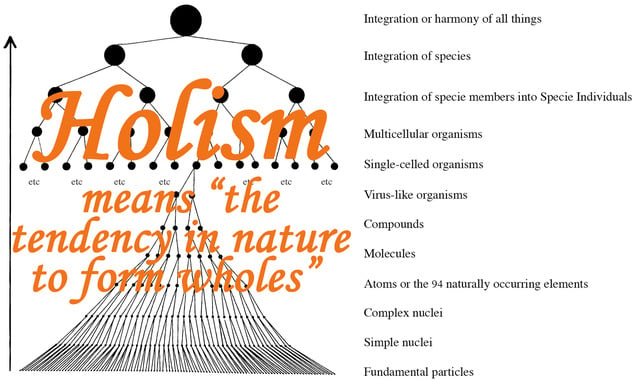
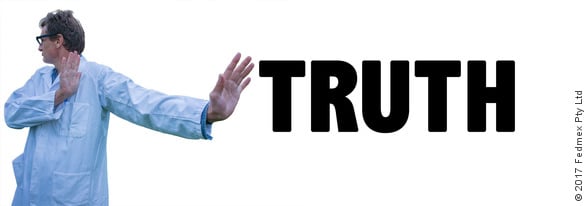

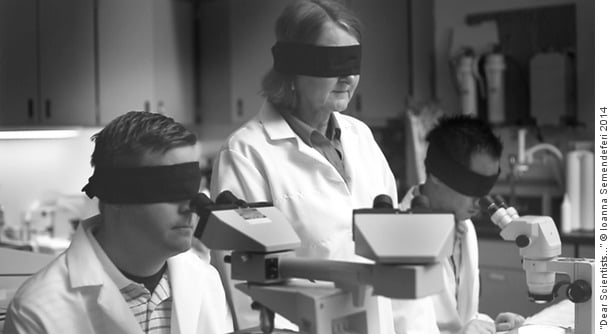

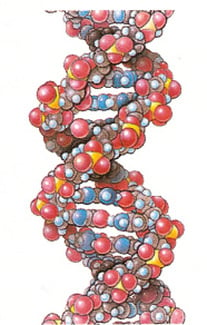
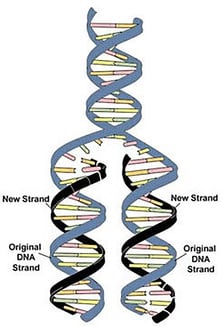

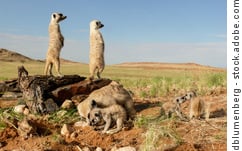
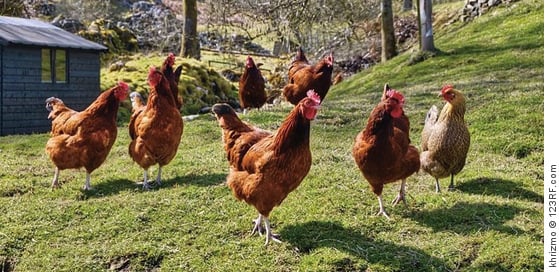
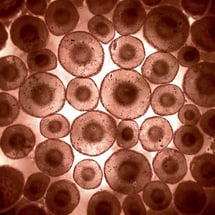
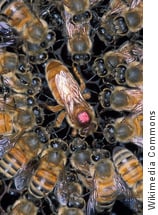
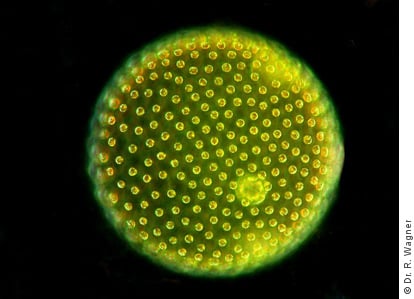
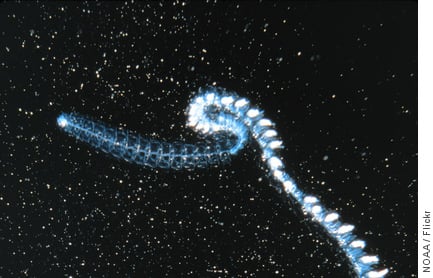
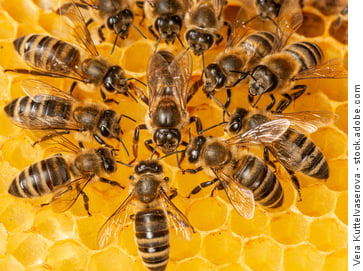
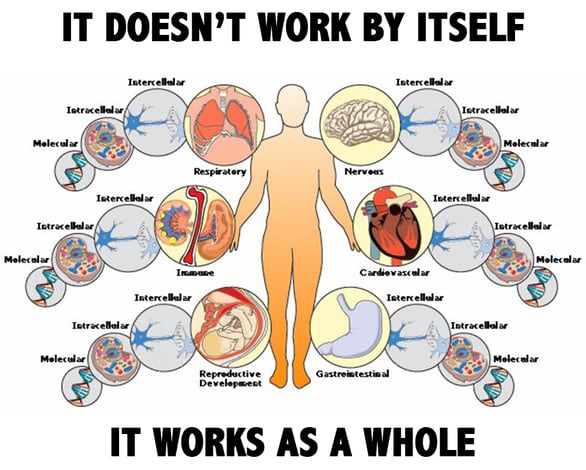

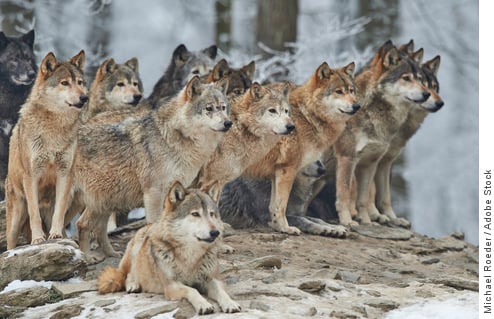
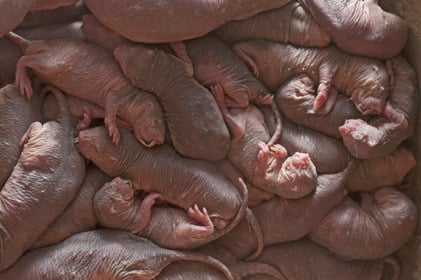
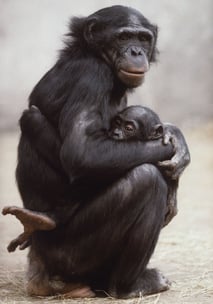
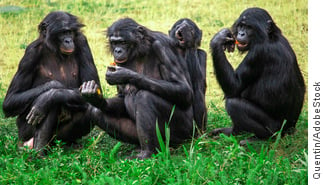
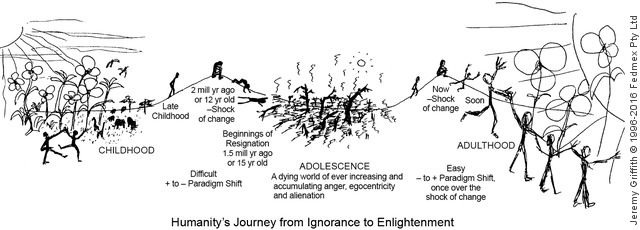

Please wait while the comments load...
Comments